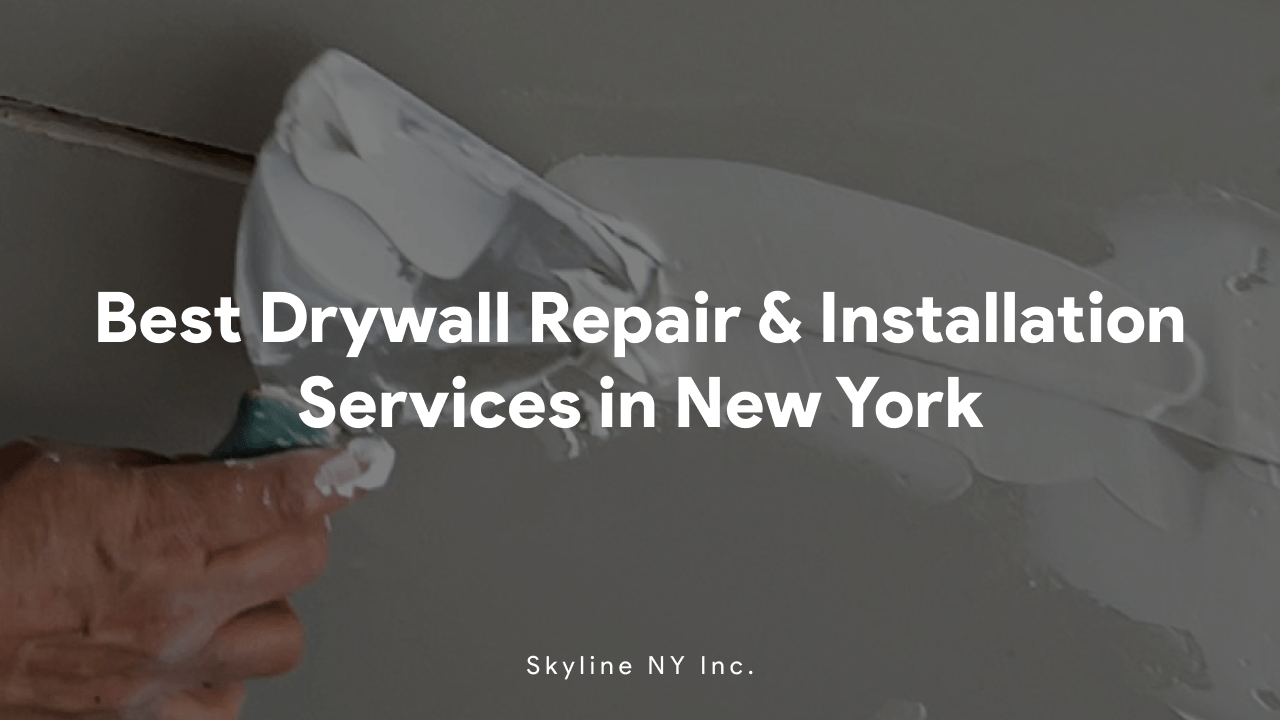
Best Drywall Repair and Installation Services in New York

Looking for the Best Drywall Repair and Installation Services in New York
Hey there, fellow DIY enthusiasts and property owners! Today, we’re diving into the world of drywall – that unassuming material that hides behind our walls but plays a significant role in our homes and offices. Whether you’re building a new space or giving an old one a facelift, understanding how to install and repair drywall is essential. Let’s get started!
Understanding Drywall
Drywall, also known as gypsum board or wallboard, is a ubiquitous building material used for interior walls and ceilings. It consists of a core of gypsum plaster pressed between two layers of thick paper. This versatile material provides a smooth, durable surface for painting, wallpapering, or applying texture.
The Importance of Proper Installation
Proper drywall installation is crucial for maintaining the structural integrity and aesthetics of a property. Hiring a drywall handyman can ensure a professional finish. Rushing through the installation process can lead to uneven seams and unsightly bulges in the walls, which may require extensive repairs later on.
Signs of Drywall Damage
Identifying signs of drywall damage early can save you time, money, and headaches down the road. Keep an eye out for the following issues:
- Cracks and Holes: Small cracks and holes can occur due to settling, temperature changes, or accidental impacts. These should be patched promptly to prevent further damage.
- Water Damage: Water stains, bubbling paint, or sagging drywall are signs of water damage. Address the source of the water infiltration and repair the affected areas.
DIY vs. Professional Repair
When it comes to drywall repair, deciding between a DIY approach and hiring a professional is a common dilemma. While minor repairs like patching small holes may be DIY-friendly, more extensive damage or complex projects often require professional expertise. Don’t be afraid to call in a drywall handyman for certain jobs – it’s worth it in the long run!
Tools and Materials Needed for Repair
Before diving into a drywall repair project, gather the right tools and materials. Basic items like drywall compound, sandpaper, a putty knife, and drywall tape are must-haves. Investing in high-quality tools can make the job easier and ensure better results.
Step-by-Step Repair Guide
Now, let’s walk through the process of repairing common drywall issues step by step:
Patching Small Holes and Cracks:
- Clean the area around the hole or crack.
- Apply a thin layer of drywall compound over the damaged area.
- Place drywall tape over the compound and smooth out any air bubbles.
- Apply a second layer of compound, feathering the edges to blend with the surrounding wall.
Tips for preventing drywall damage
Let’s dive into some practical tips for preventing drywall damage. Whether you’re a homeowner or a business owner, these strategies can help you maintain your walls in top shape:
- Proper Installation Matters: When installing drywall, ensure that it’s done correctly. Uneven seams, gaps, or poorly secured panels can lead to future issues. If you’re not confident in your DIY skills, consider hiring a professional for installation.
- Avoid Moisture Exposure: Moisture is the enemy of drywall. Keep an eye out for leaks, plumbing issues, or condensation near your walls. Address any water-related problems promptly to prevent damage.
- Use Proper Anchors and Screws: When hanging heavy items (such as shelves or artwork), use appropriate anchors and screws. Over time, improperly secured fixtures can cause stress on the drywall, leading to cracks or holes.
- Be Mindful During Furniture Moves: When rearranging furniture, be gentle with your walls. Bumping furniture against drywall can create dents or scrapes. Consider using furniture pads or sliders to protect both your floors and walls.
- Avoid Overloading Wall Hooks: Wall hooks are handy for hanging coats, bags, or keys. However, overloading them with heavy items can weaken the drywall. Use sturdy hooks and distribute the weight evenly.
- Regular Inspections: Periodically inspect your walls for signs of damage. Look for cracks, holes, or areas where the paint is peeling. Catching issues early allows for timely repairs.
- Mind the Temperature: Extreme temperature fluctuations can affect drywall. Avoid placing heat sources (like radiators) too close to walls, as this can cause expansion and contraction, leading to cracks.
- Keep Pets’ Claws in Check: If you have pets, be mindful of their claws. Scratches from playful cats or dogs can mar the surface of your drywall.
Remember, addressing drywall issues promptly can prevent more significant problems down the line. Whether you’re a seasoned DIYer or prefer to hire a professional, keeping your drywall in top shape ensures a beautiful and functional living space.






